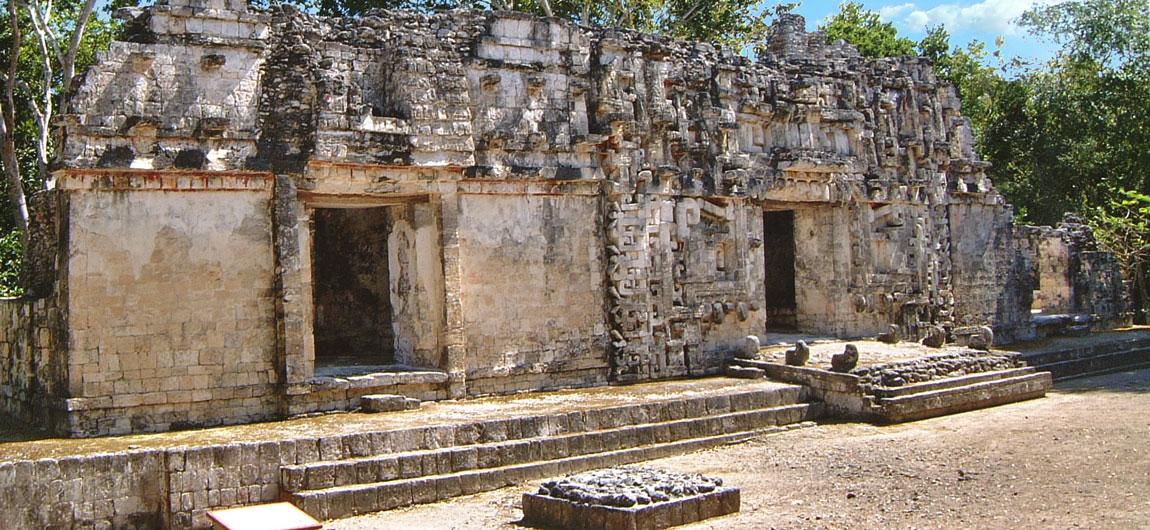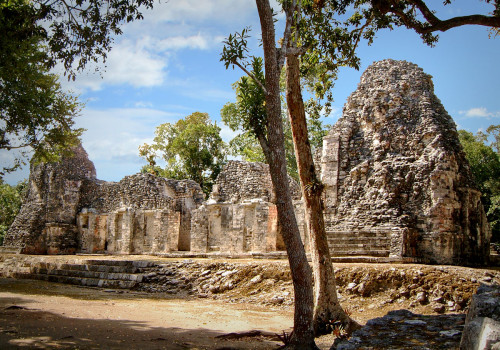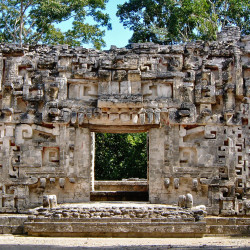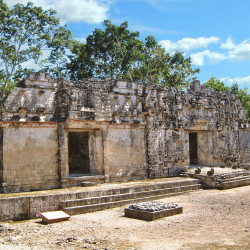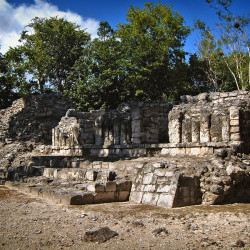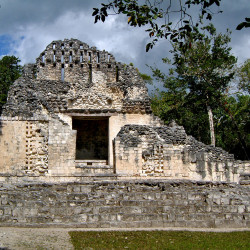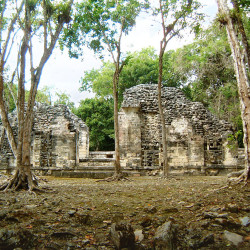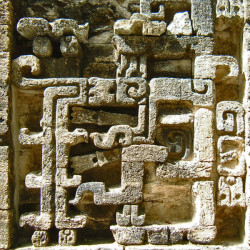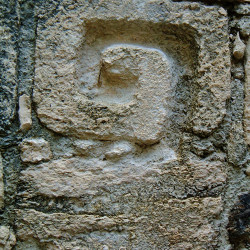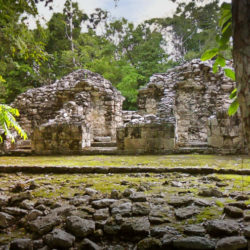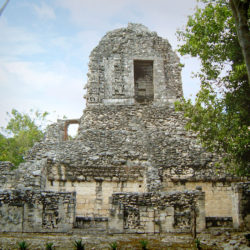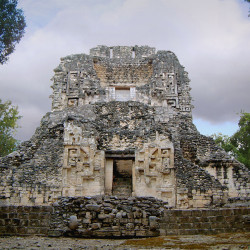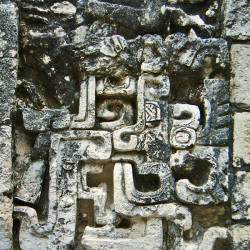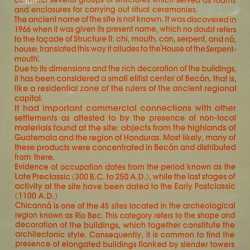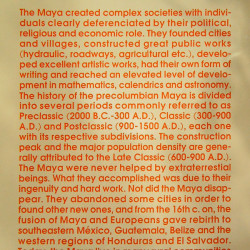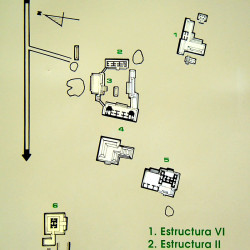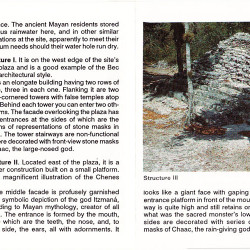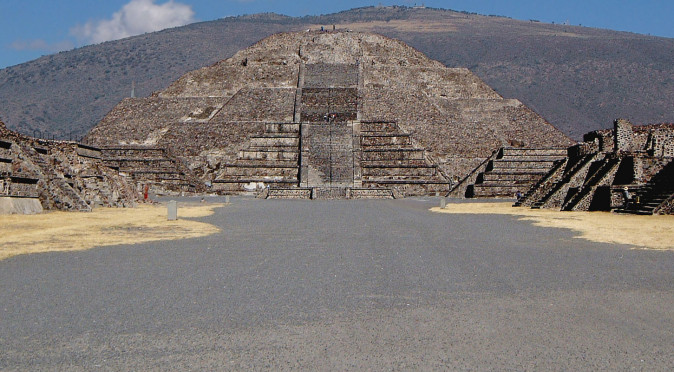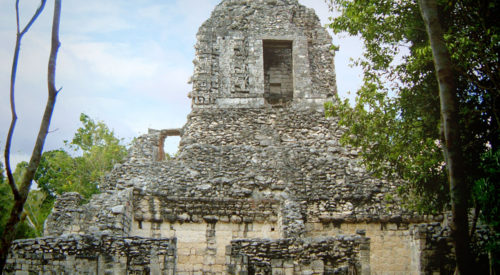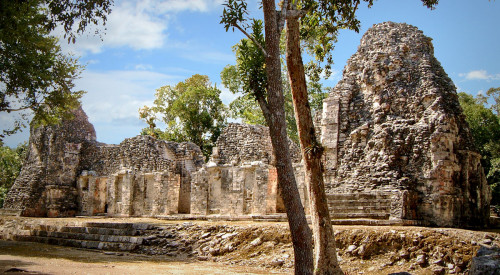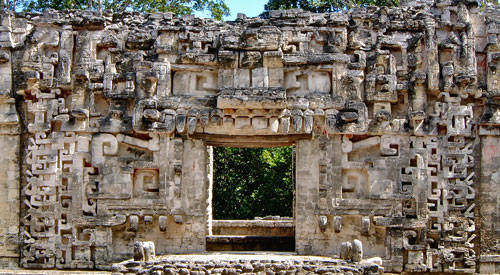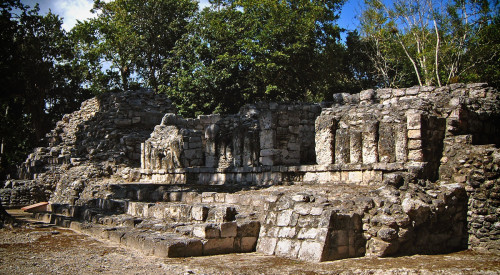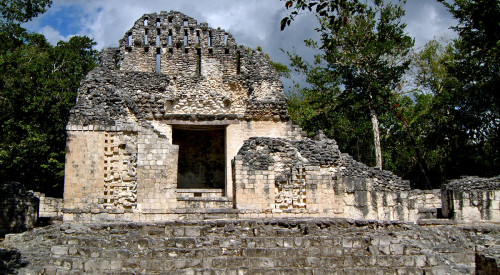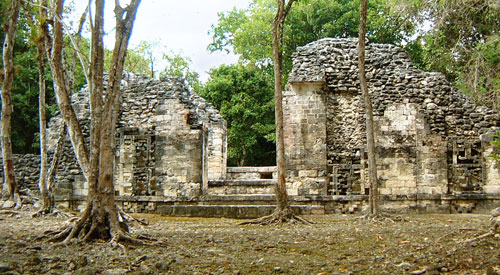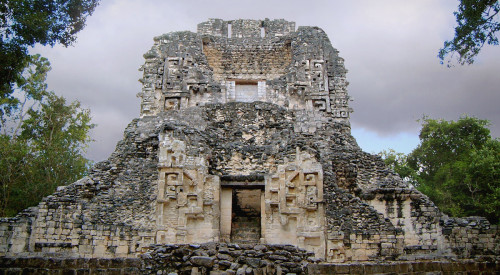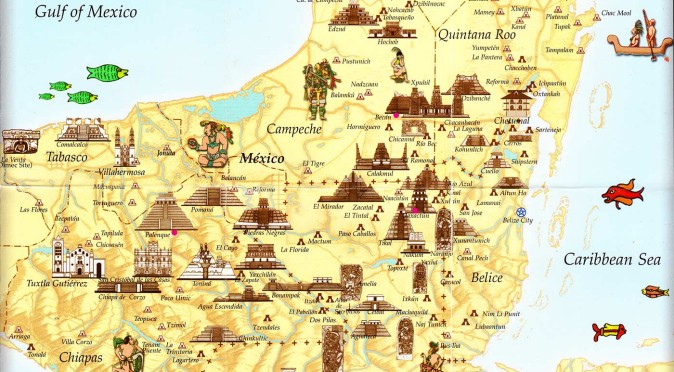The ancient Mayan ruins of Chicanna are located at the heart of the Mayan Lowlands in Campeche, Mexico. Chicanna is thought to originate from the Preclassic Era between 300AD and 250AD. The settlement expanded rapidly throughout the Late Classic era, until it was abandoned in around 1040AD. The site is small in comparison to its illustrious neighbours, Becan and Calakmul. Yet it contains some of the most exquisite Mayan temples ever discovered. The finest of these buildings are Structure I, Structure II and Structure XX. These glorious structures date to the Classic Era, between 650AD and 850AD and the majority of Chicanna’s other stone structures also date to this era.
The Ruins of Chicanna
House of the Serpent Mouth
Chicanna is famous for its near perfect monster mouth temple. Designated as Structure II, this temple inspired the name of the archaeological site; “Chi” means mouth, “Caan” snake, and “Na” house. The Mayan name for the site is unknown, but with the rapid progress being made in deciphering Mayan hieroglyphics, Chicanna’s real name may soon be discovered carved upon its walls.
Gateways to the Underworld
Although Structure II grabs all the attention, Structure XX features three monster mouth portals. Researchers have long believed these doorways represented the god Itzamna, however it now seems likely that they represent the Witz Monster. This beast is also known as the Earth Monster and 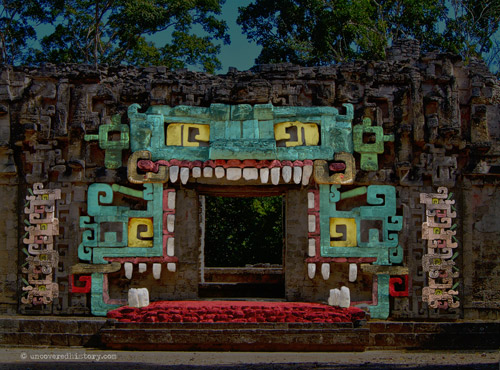 Chicanna Structure II Kawak Monster due to its association with caves and water. However, the word Witz was deciphered in the beast’s eye at Palenque and this has brought about a greater understanding of the beast. In the Mayan language, the word “wi-tzi” means mountain and the beast is understood represent the cave within the sacred mountain that led to the underworld. These monster mouth doorways therefore represent portals to the underworld that enable priests to communicate with the gods and spirits of the deceased. This is discussed at length in the article on Structure II: The Monster Mouth Temple.
Chicanna Structure II Kawak Monster due to its association with caves and water. However, the word Witz was deciphered in the beast’s eye at Palenque and this has brought about a greater understanding of the beast. In the Mayan language, the word “wi-tzi” means mountain and the beast is understood represent the cave within the sacred mountain that led to the underworld. These monster mouth doorways therefore represent portals to the underworld that enable priests to communicate with the gods and spirits of the deceased. This is discussed at length in the article on Structure II: The Monster Mouth Temple.
Built for Performance
Chicanna’s ornate structures appear to feature symbolism that corresponds with the direction they face. For example, Structure II faces west toward the dying sun and features symbolism of the underworld. Utilising ornate designs and careful alignments, the structures of Chicanna were deeply representative of the Mayan religion. Firstly, the carvings honoured the god or religious function to which the temple was dedicated. Secondly, the alignment of the building and its architectural features enabled the days of worship to be identified through solar phenomenon.
Timepieces of Stone
Structure I is a particularly simple yet effective solar observatory. An observer standing on the platform between Structures I & II would have easily been able to record the sun’s position on the western horizon at sunset using the twin towers. The mock temples that once stood on top of the towers may also have let light pass through them on specific days of worship. Architectural features on Structure I could also have cast light or shadows onto Structure II to trigger its ritual days. This is discussed at length in the article on Structure I.
Structure XX appears to be a more complex timepiece. It’s upper chambers face all four cardinal directions and could have been used to give offerings to the sun. On the ground level are nine external rooms that feature three carved faces beneath a stone altar. A tenth internal room features a further two faces beneath its bench. The nine rooms undoubtedly correspond to the Nine Lords of the Night and the 29 faces are likely to be markers to count the lunar calendar. Once each Lord had reigned for 29 days, a total of 261 days would have passed and the Ritual Calendar would have been completed. This is discussed at length in the article Structure XX: A Timepiece in Stone.
The Paradox of Chicanna’s Position
While the complex Mayan symbolism carved onto its temples is starting to be unlocked, the simple question of what Chicanna’s purpose was remains a mystery. The problem stems from the fact that Chicanna is less than 2km from the city of Becan. This is too close for Chicanna to have been an independent community or a political outpost. At this distance, Chicanna is likely to have sat within the suburban sprawl of Becan. But if Chicanna was merely a suburb of Becan, it would not have needed powerful temples for its population would have fallen under the spiritual jurisdiction of Becan. This conundrum is discussed at length and possibly solved in the article on the History of Chicanna.
Visiting the archaeological ruins of Chicanna
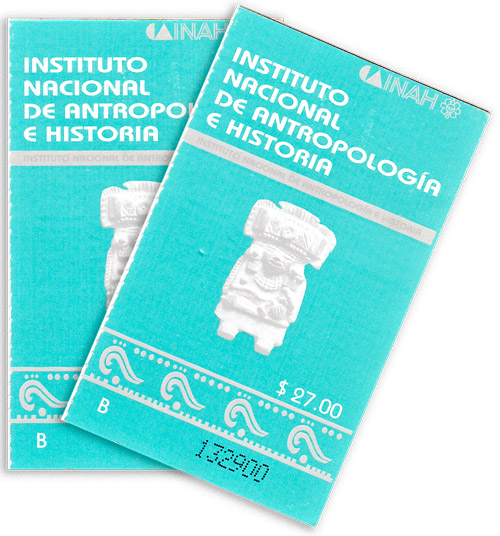 Chicanna is a small archaeological site that doesn’t rank against the likes of Palenque and Chichen Itza. It is even dwarfed by its neighbours Becan and Calakmul. However, Chicanna contains a number of spectacularly ornate buildings, the likes of which are not found elsewhere. Structure II is one of the most magnificent and profound Mayan temples ever uncovered. It is also one of the best preserved monster mouth temples and the reason why the majority of visitors make the effort to visit this remote site.
Chicanna is a small archaeological site that doesn’t rank against the likes of Palenque and Chichen Itza. It is even dwarfed by its neighbours Becan and Calakmul. However, Chicanna contains a number of spectacularly ornate buildings, the likes of which are not found elsewhere. Structure II is one of the most magnificent and profound Mayan temples ever uncovered. It is also one of the best preserved monster mouth temples and the reason why the majority of visitors make the effort to visit this remote site.
Chicanna is not the easiest of places to get to as their is no public transport that passes by. However, it is also not difficult either. From the border town of Chetumal, it is easy to rent a car and drive the 2hr journey straight down State Highway 186.
Also in the Region
The road to Chicanna passes Calakmul, one of the most powerful cities in Mayan history. The ruins of Calakmul are quite a long way south of State Highway 186 and are probably better combined as a day trip with Balamku. The Mayan city of Becan and the ruins of Xpuhil are very close to Chicanna on State Highway 186 and these three sites make an easy day-trip from the border-town of Chetumal. Whilst in Chetumal, it is worth exploring the Museum of Mayan Culture. From Chetumal, you can easily head south to explore the Mayan cities in Belize or head north to explore the dramatic Mayan cities of Tulum and Coba.
Monster Mouth Structure II
Triple chambers of Structure II
Pyramid of Structure III
Structure VI
Structure X
Mask on Structure X
Spiral on Structure X
Preclassic Structure XI
East face of Structure XX
South face of Structure XX
Mask on Structure XX
Chicanna Information
Maya Information Board
Map of Chicanna
Information Pamphlet

